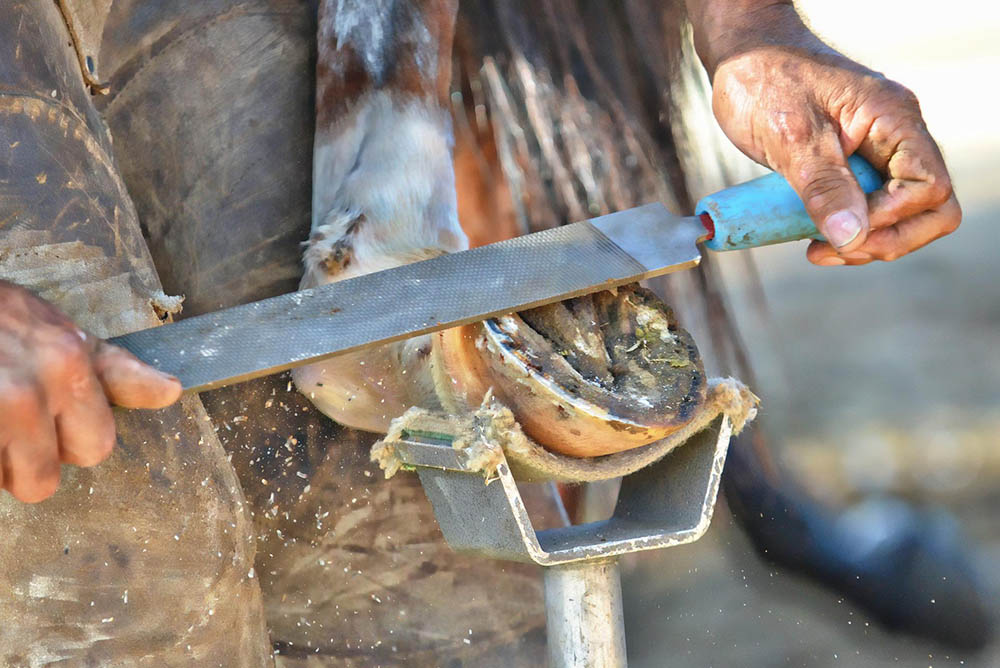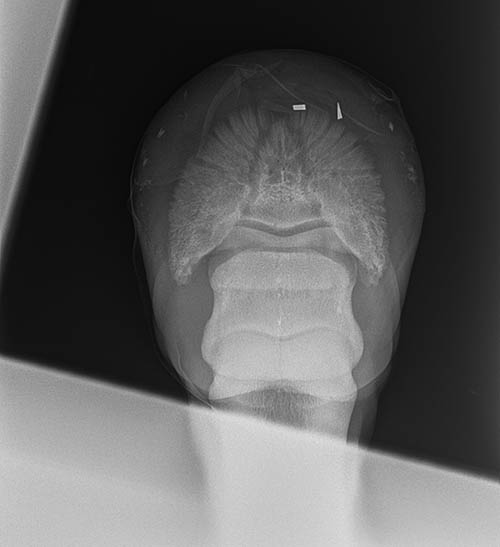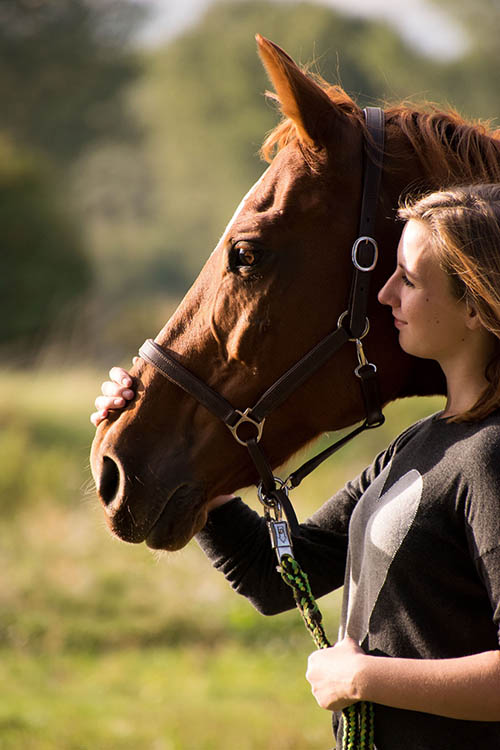As an equine vet, I feel it is important for owners to promote a good relationship between their vet and all other healthcare professionals who provide a service to your horse.

I have worked with and conversed with many individuals in the equine world, and never once have I found anyone who has been 100% right, 100% of the time. In times gone by, it was not uncommon for vets to bang heads with other health providers involved in the care of the same horse, such as farriers, physiotherapists or dentists.
In my experience, it wasn’t necessarily just the vet that instigated the disagreement regarding how an owner should proceed with their horse, as farriers would dispute hoof care and physios would differ on management programs and the fallout was a confused owner and an unhappy horse. Thus, in the best interest of the horse, it is important that everyone is open-minded, communicative and works together as a team.
As an owner, you should take a proactive role and encourage a good relationship between all healthcare providers, and not be responsible for, or propagate, any bad blood between them. For example, if the horse is lame and the vet believes the lameness comes from the foot, don’t say to the farrier: “The vet said it is footsore, so it must be your fault.” Similarly, the vet should refrain from making those sorts of comments, and if he or she inadvertently does, then don’t be so quick to pass on the negative comments, but rather exercise some tact in the interest of better relationships.
The benefit of a harmonious relationship is evident in a case I saw recently where I was able to work as a team with the farrier and the outcome was great for everyone. The patient was a three-year-old thoroughbred gelding that was 2/5 lame in his left front leg, and I was able to localise the lameness to the foot. The farrier was consulted and he took over the management of the lameness, although I stayed in close contact with the owners to follow the horse’s progress.
The lameness improved under the farrier’s care initially but returned about a week or so later. An abscess or an under-run sole due to an infection was suspected, but with pain around the whole foot, the farrier could not isolate an area on the sole to dig into and relieve the pressure. Despite daily bathing of the foot and hot poultices applied, the horse remained lame with no sign of an abscess tracking out of the foot.


BEST APPROACH
As I had a great relationship with the farrier, we discussed the case and decided the best approach was to work together to find a solution. I was able to X-ray the foot with the farrier present and isolate a small pocket of pus (gas pocket) near the toe of the foot. The farrier was able to cut the tip of a horseshoe nail and fix it to the area of the sole that we both thought approximated the underlying gas pocket. By X-raying again and adjusting our marker, we were able to accurately pinpoint an area and the farrier was able to make a small hole directly over the abscess and allow the pus to escape. The result was a horse that was significantly sounder (and happier) the following day.
This is a very simple case, but it illustrates that a combined effort can often resolve an issue more efficiently. There are numerous examples of cases where communication and co-operation between the veterinarian and the farrier have resulted in far superior outcomes than with either working alone. Laminitis sufferers, thin-soled horses and horses with pedal bone fractures have all benefited from a dual input approach.

Chiropractors, physiotherapists, and veterinarians have probably had a more volatile relationship than that of the veterinarian/farrier. This is potentially due to the lack of regulation in the “muscle person” industry and the ability of some lay people to branch into this field with little or no training. There are, however, several very well-credentialled physiotherapists and equine chiropractors that I have a good working relationship with, and even if I don’t agree with everything they find or techniques they may utilise, I am still happy to show them respect and listen to their assessment, without forming a negative opinion before I have contemplated the validity of their findings.
To the contrary, I have often discussed their findings with them and utilised their input to help gauge an overall assessment of the musculoskeletal system. There have been incidences where I have been unable to improve a horse’s gait, but the owners have reported immediate improvement following treatment by the physiotherapist or chiropractor. I generally find that the well-credential physiotherapists or chiropractors are comfortable discussing their cases with the vet and can offer good advice on managing movement, balance, and rehabilitation exercises for all types of injuries. This advice can then be used to help incorporate exercise protocols around veterinary timelines such as ultrasound or X-ray assessments.
These are some of the reasons why I believe it is essential to promote and encourage a good working relationship between all the individuals involved in the care and welfare of your horse, because not only will your horse be better off, so will you. EQ
YOU MIGHT ALSO LIKE TO READ THE FOLLOWING BY DR MAXINE BRAIN:
What Constitutes an Emergency – Equestrian Life, July, 2022
Peri-Tarsal Cellulitis Calls for Quick Action – Equestrian Life, June, 2022
Sinusitis: Not To Be Sneezed At – Equestrian Life, May, 2022
Japanese Encephalitis: No Cause For Alarm – Equestrian Life, April, 2022
Hernia Learning Curve – Equestrian Life, March, 2022
Osteochondromas: Benign But Irritating – Equestrian Life, February, 2022
Don’t Forget the Water – Equestrian Life, January, 2022
Understanding Anaesthesia – Equestrian Life, December, 2021
A Quick Guide to Castration – Equestrian Life, November, 2021
Caring for Mammary Glands – Equestrian Life, October, 2021
Sepsis In Foals – Equestrian Life, September 2021
Understanding Tendon Sheath Inflammation – Equestrian Life, August 2021
The Mystery of Equine Shivers – Equestrian Life, July 2021
Heads up for the Big Chill – Equestrian Life, June 2021
The Ridden Horse Pain Ethogram – Equestrian Life, May 2021
The Benefits of Genetic Testing – Equestrian Life, April 2021
Heavy Metal Toxicities – Equestrian Life, March 2021
Euthanasia, the Toughest Decision – Equestrian Life, February 2021
How to Beat Heat Stress – Equestrian Life, January 2021
Medicinal Cannabis for Horses – Equestrian Life, December 2020
Foal Diarrhoea Part 2: Infectious Diarrhoea – Equestrian Life, November 2020
Foal Diarrhoea (Don’t Panic!) – Equestrian Life, October 2020
Urticaria Calls For Detective Work – Equestrian Life, September 2020
Winter’s Scourge, The Foot Abscess – Equestrian Life, August 2020
Core Strengthening & Balance Exercises – Equestrian Life, July 2020
The Principles of Rehabilitation – Equestrian Life, June 2020
When is Old, Too Old? – Equestrian Life, May 2020





